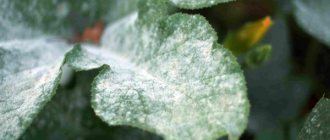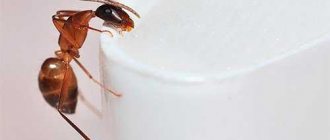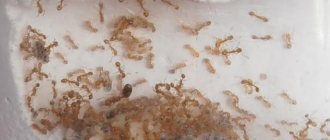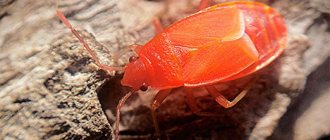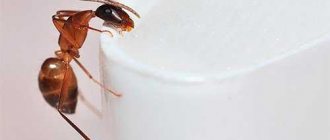White mold (Mucor)
Mold fungi grow and multiply on the surface of the soil, food products, and organic waste.
Some Mucor species are capable of causing human disease. And some species are used to produce antibiotics.
White mold on the soil in a pot does not bring any benefit; on the contrary, it can be dangerous. In appearance, it resembles white fluff, gradually filling the soil surface. To the touch, the structure is soft, easily crushed with your fingers.
It negatively affects the well-being of people and plants. Mucor will not cause any significant harm to most healthy people. But during sporulation, microscopic fungal spores entering the respiratory tract can cause an allergic reaction.
It is not so much the mold itself that harms a house plant, but the conditions under which it develops. It appeared because the rules for keeping flowers were violated.
Favorable conditions for spore germination, such as high humidity at low temperatures, heavy soils, negatively affect the development of crops. Therefore, the appearance of Mucor is not the cause of the depressed state of the plant, but a result that signals a deterioration in conditions.
Methods of disposal
In order to eliminate fungus in flower pots, the following measures must be taken:
- Replace the top layer of soil, approximately 2 - 3 cm deep, with fresh soil of a lighter structure.
- Reduce the number of waterings.
- Prevent water stagnation.
- Provide drainage.
- Loosening will saturate the soil with oxygen.
- Antifungal drugs - fungicides. For medicinal as well as preventive purposes, the ground is periodically watered with a solution of Fitosporin. It is absolutely safe, as it is a remedy for mold of biological origin.
The soil in the box with seedlings is covered with mold
Another problem that you may encounter in the spring is the appearance of mold in a box of seedlings.
Newly planted seeds want to be watered more often, in addition, many people put plastic bags over boxes with seedlings, or cover the boxes with glass to create a greenhouse effect.
As a result, young plants become sick. Moreover, such a trend is noted. Tomatoes and peppers that have already grown a little are not affected by mold. It is the seedlings that suffer, and they are the most difficult to help . The tiny plants have not yet been picked, they are located at a short distance from each other, their roots are thin as threads.
Soluble salts - efflorescence
Any water used for irrigation contains soluble salts. Their concentration varies: hard or well water contains a large amount of salts. The smallest amount of elements contains rain, melt, and so-called “soft” water. Depending on the microelements present, the color of the efflorescence will differ: calcium salts will give a white tint, and if there is an excess of iron, the soil on top will be yellow or brown.
This phenomenon most often affects heavy soils with poor drainage and frequent surface watering. When water does not completely wet the earthen ball, soluble salts do not reach the roots well and linger on the surface.
Overly fertilized soil can also cause efflorescence. If microelements do not have time to be absorbed by the flower, they begin to come to the surface.
How to deal with salt deposits
In order to get rid of plaque, eliminate the cause of its appearance:
- Carefully replace the top layer of soil.
- If possible, use soft water: rain or tap water, well settled.
- Reduce the frequency of watering by increasing the volume of liquid so that the earthen ball is completely saturated.
- Ensure good drainage and clear clogged drainage holes.
- Regularly loosen the top layer of soil.
How to distinguish mold from efflorescence
The fungus protrudes a few millimeters above the soil surface, its structure is soft, delicate, and can be easily rubbed between the fingers.
Efflorescence resembles a thin coating that is difficult to separate from the soil and feels rough to the touch.
How to soften water for watering flowers
The easiest way is to collect rainwater. But this option is not suitable for industrial areas, since raindrops will collect dust and chemical elements in the air.
- Use well-settled water. For watering, take the top layer, excluding shaking.
- Filtered water. There are special filters for hard water that soften it by retaining calcium salts.
- Melt water. Take regular tap water out into the cold or place it in the freezer. Liquid without salts freezes earlier; complete freezing should not be allowed. Then the unfrozen water is drained and the ice is defrosted. The water prepared in this way will be soft and biologically active – “alive”.
- It is good to use aquarium water for watering. But provided that no drugs or other additives were added to it.
How mold can threaten flowers and plants
Many people believe that mold is practically harmless to flowers, and you can get rid of it extremely simply by removing the top layer of soil from the pot. In fact, this is far from the case. Mold not only harms plants, but also penetrates deep into the soil, causing damage to roots.
[adsp-pro-4]
Most often, mold appears at a time when there is still or no heat outside, and the heating in the apartment is turned off. During this period, the evaporation of moisture occurs slowly, the water stagnates, and the soil begins to rot.
This ultimately leads to a series of sequential problems:
- A dense crust appears on the ground, which has a characteristic smell of mold.
- The air exchange of the soil is disrupted.
- The soil becomes unsuitable for the plant - the mineral composition and acidity of the soil changes.
- The roots begin to weaken and gradually rot.
- Leaves and stems no longer receive sufficient nutrients and slowly wither.
- The plant begins to turn yellow and dry out.
Mold in the pot forms a dense crust, and a characteristic unpleasant odor appears from the plant.
The final stage of the impact of mold on a plant is its death.
Folk methods of dealing with various raids
Folk remedies involve the use of safe methods:
- Replanting the plant or replacing the top layer of soil.
- Using a weak solution of potassium permanganate. This method is effective only against mold, since potassium permanganate has fungicidal (antifungal) properties.
All types of molds, efflorescence, moss, appear on dense, poorly drained soils. Improving the soil structure, loosening, and regulated watering will help prevent this problem.
Causes of the appearance and spread of fungus
There are many reasons why mold has appeared in a pot. But most of them are the result of improper plant care. Beginners especially often encounter this problem, since experienced flower growers already know that the soil needs care no less than the flower itself.
Important. The peak development of fungus and mold occurs in the autumn, when it becomes damp and cold outside, and the sun practically does not shine. There is a slightly lower risk of mold developing in the spring, although it all depends on how sunny it is.
The main reasons for the appearance of mold on indoor plants include the following:
- Poor drainage. Water stagnates in the pot, which leads to rotting.
- Excessive watering.
- Increased air humidity.
- Watering with low-quality water (from the tap).
- Poor soil quality.
How fungi get to plants
- penetrate through stomata, water pores and epidermal cells.
- penetrate through wounds, cracks from mechanical damage, through damaged tissue resulting from sunburn and frostbite.
- penetrate through wounds and passages left by ticks, insects and other pests, through which infection easily penetrates. Namely, they are carriers of all kinds of infections.
Below in the photo, the anthurium was affected by spider mites, which subsequently became the cause of the fungal disease Anthracosis, in the photo the initial stage.
Fungal diseases spread very quickly, the plant is difficult to treat and is often difficult to save, so it has to be disposed of. It is possible to help a plant at the initial stage of infection, but you need to find the source, the cause of the infection, eliminate it, and only then begin treatment. Otherwise, all our efforts are useless, after a while everything will happen again.
Fungal diseases are insidious
On domestic plants, these diseases are difficult to diagnose. The disease is insidious, can camouflage itself well, and often the signs of the disease can be confused with a violation of the conditions of detention (frequent flooding, hence rotting of the root system, low humidity, frostbite, the presence of a pest, lack of nutrients, etc.). In addition, with proper care, the disease develops much more slowly and is not as pronounced as on open ground plants.
In the photo below, a characteristic fungal disease on anthurium
As a result, time is lost, the home collection is infected and requires immediate treatment, some plants are at a stage of disease development that makes it almost impossible to save them. The mood is spoiled, there is no desire to breed house plants.
Another anthurium is affected by fungus
To prevent this from happening, let's figure out what types of fungal diseases exist, what they are and which of them are more dangerous for anthurium. Let's consider treatment methods and preventive measures.
“Fungal plant diseases are diseases caused by phytopathogenic fungi (parasites and semi-parasites). Under the influence of fungi and pathogens in plants, pathological processes arise, accompanied by disruption of the structure and physiological functions of the plant or its individual parts, for example, the formation of growths, swellings, changes in respiration, assimilation of enzymatic activity, impaired growth and development, death of affected tissues" ( Bolshaya Sovetskaya encyclopedia ).
Measures to prevent mold
Fighting rapidly developing mold is not an easy task, since the spores are very tenacious and multiply quickly. To prevent the soil in the flowers from becoming moldy, several points must be taken into account:
- avoid overwatering;
- do not use a humidifier in a room with indoor plants;
- regularly ventilate the room where flower pots are located;
- provide plants with a sufficient level of illumination;
- do not place flower pots in a draft;
- do not use organic fertilizers, do not scatter eggshells or tea leaves in pots;
- Grow plants in suitable sized pots.
Creating favorable conditions will significantly reduce the risk of fungal growth in flower pots.
Mode of application
Fungicides can be applied in three different ways.
The first is seed treatment before planting. This is done either using dry powder or a solution of fungicide in water.
The second method is spraying adult plants. In this case, treatment is carried out with a fungicide solution, usually this is done in spring and autumn (as a preventative measure), and also when the plant is infected with a fungus and needs to be cured.
You can also apply the dry preparation or its solution directly to the soil before planting the plant. This treatment will destroy any fungi that may be in the soil and prevent infection of the plants.
All fungicides must be used strictly according to the instructions so as not to harm the plant. You also need to remember that many fungicides are classified as substances of medium danger. But there is no need to worry, if you handle fungicides correctly, they can only harm fungi.
That is why it is very important to follow safety precautions when working with fungicides: protect your hands with gloves, wear protective clothing, and wash your hands thoroughly after work. Also be sure to isolate children and pets from the premises.
How to get rid of mold
First of all, if mold and the smell of rot appear, then you should reduce the frequency of watering. For some indoor plants, keeping the soil moist is enough. In general, it’s worth reading about the plant that you have in the pot and finding out how to properly care for it.
If you water abundantly, but rarely, be sure to loosen the soil deeply. Just be careful not to damage the roots.
If you suddenly find mold on the soil in pots, you should do the following:
- We remove the outer layer of soil, the faster the better. We remove as much as the plant's roots allow.
- We moisten the soil with a solution of citric acid. The acidic environment prevents the fungus from spreading. Take 1/2 teaspoon per glass.
- We replace the removed layer of soil with a new one and add bactericidal substances, which will play the role of a filter element for water. Usually crushed sphagnum moss and charcoal are added. You can crush activated carbon tablets.
- And then it is watered with a special antifungal drug. If there is a fungus on the plant, we treat it too. Fundazol is often recommended. Just be careful, it is toxic to humans, and if the proportions are not chosen correctly, then the plant will suffer.
Don’t forget to loosen the soil in the flower more often, and also water the soil with a solution of citric acid at least twice a month. All this after completing all the points above.
Among other things, replanting the plant in new soil helps. At the same time, the plant itself must be healthy. Or treat the plant itself.
It is not uncommon for the soil to be disinfected, but there you have to fry the soil in the oven, and this creates such a smell throughout the apartment that...
I advise you not to do this, but simply buy new primer in the store, but then you should do the following:
- Separate the roots of the plant from the soil.
- Treat the roots with a special compound; the store will tell you to use something or a solution of citric acid.
- Rinse the pot itself well and also treat it with a special composition. And if it is possible and the pot itself allows it, treat it with high temperatures.
- Be sure to make a good drainage system: the pot should have holes of the required diameter, and expanded clay or granite chips should be poured into the bottom of the pot.
- We pour new soil according to all the rules and water it with agents that prevent the growth of fungi.
Remember that fungal spores are in the air. Therefore, if you have replaced the soil or replanted a flower, then it is worth cultivating the soil for a while until the air in the apartment and all the dust in the premises are replaced. You can do general cleaning... several times)))
You can also get rid of mold using chemicals, which are available in a wide variety of types in flower shops.
First of all, you need to take into account several factors:
- type of soil;
- plant characteristics;
- degree of soil and flower damage;
- what fertilizers were used for the flower.
It is best to use organic products that penetrate deep into the soil and prevent the fungus from spreading.
Soil disinfection
One of the most effective ways to fight mold in flower pots is to disinfect the soil composition. To do this, you need to follow the following instructions:
- Separate the flower from the infected substrate;
- To boil water;
- Pour boiling water over the substrate;
- Place the soil on a baking sheet and bake in the oven;
- Leave the substrate to cool;
- Treat the pot with a disinfectant;
- Replant the flower;
- Spill the substrate with a solution of citric acid. To prepare it, add ? tsp acids.
How to fight with folk remedies?
At home, chemicals can be replaced with products prepared according to folk recipes. The most common of them:
- Ash infusion - 1 kg of ash is dissolved in 10 liters of water at a temperature of +30 ° C and left for 5 days. Then the liquid is filtered and diluted with liquid laundry soap. The resulting drug is used to treat fungal diseases. The plant is treated 3 times with an interval of 1 day.
- Whey - the product is diluted with water in a ratio of 1:10. Spraying is performed to prevent fungal infections once every 14 days.
- Infusion of horsetail (100 g / 1 l of water) - the drug is used to treat powdery mildew.
- Potassium permanganate solution (2 g/10 l of water) – treatment is recommended in an amount of 3 times.
Transplanting a plant
The most effective way to combat infection is to replant the crop. This procedure helps not only get rid of mold, but also eliminate other problems, as well as provide the plant with nutrients, because it has managed to pull out all the minerals from the old soil.
See also The earth is covered with mold: methods of control
The substrate for transplantation must be selected taking into account all the rules and requirements for a particular flower. It is important to ensure good drainage. To do this, charcoal, broken polystyrene foam or small pebbles are placed at the very bottom of the pots.
After removing the contaminated soil composition, it is recommended to wash and disinfect the pot. The permissible moisture level should also be clarified in advance for a specific crop and not exceed it.


